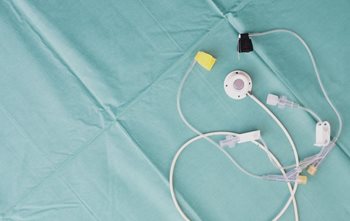Sign in or register for an account.

It's All About Ports
This instructional course has been designed for nurses caring for the patient with an implanted venous port. The use of this particular type of central venous access device is different, in some ways, from the other types of central lines. Therefore, education related specifically to the implanted venous port is crucial to the safe and effective use of the device.
In early 2024, the Infusion Nurses Society (INS), recognized as the global authority in infusion therapy, released the updated Infusion Therapy Standards of Practice. The INS sets the accepted standards for infusion therapy practice for all healthcare settings. This course is based on the current best practices as defined by the Infusion Nursing Society and other governing agencies such as the CDC, and FDA.
State Boards of Nursing have varying positions on the role of the LPN/LVN in the administration of infusion therapy, including the use of implanted venous ports. Competency requirements are obtained and maintained through the nurse’s employer, facility or institution.
Questions? Check out our FAQs page and How Online IV Certification Works!
Objectives
Upon completion of this course, the participant will be able to:
- Distinguish an implanted venous port from other types of central venous access devices.
- Describe the procedure for accessing and de-accessing an implanted port.
- Describe the procedure for drawing a blood specimen from a port.
- State at least 3 potential port complications.
Curriculum
Chapter 1: Description
- Port vs. Other Central Venous Access Devices
- Advantages and Disadvantages
- Indications
Chapter 2: Assessment and Preparations for Implanted Port
- Assessment Criteria for Insertion of an Implanted Port
- Preparations for Implanted Venous Port
Chapter 3: Accessing a Port
- Equipment
- Needle Choice
- Procedure
Chapter 4: De-accessing a Port
Chapter 5: Drawing Blood from a Port
Chapter 6: Complications
- Malpositioned Catheter
- Reservoir Malposition
- Catheter Separation
- Catheter Occlusion
- Infiltration
- Extravasation
- Site Infection
- Catheter Related Bloodstream Infection (CRBSI) or Septicemia
- Skin Breakdown
Chapter 7: Resources
- California Bill 241
- Implicit Bias in Healthcare
- What is Implicit Bias?
- Implications of Implicit Bias in Healthcare
- How to Reduce Implicit Bias
Price: $24.00
Contact Hours: 2

Course Author

Pamela Clark
Pamela Clark, CRNI, is an infusion nurse with the Houston Methodist Sugar Land Hospital. She has more than 35 years of experience in infusion therapy and infusion education with both licensed nurses and patients. Her experience spans multiple infusion settings including: acute care, long-term care, home infusion, and ambulatory infusion care. She also has experience in oncology and oncology research.
Read Full BioCourse Accreditation
See our Accreditation Statements page to view our accreditation information.